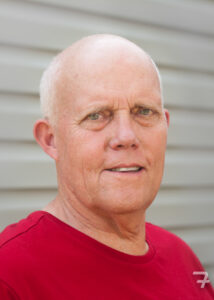Minutes submitted by Clerk Harvey Heyser
Draft Meeting Minutes – March 14, 2021
Division members met remotely on the internet using the Zoom platform. 15 or so were present. In the Superintendent’s absence (for medical reasons), Alex Polimeni, Assistant Superintendent, convened the meeting prior to the published start time for logging in. During the lead-up to the meeting, Frank Benenatti described his recent tree armature building efforts using 4 pieces of stranded wire. He offered to give a clinic on the subject. Then, the Assistant Superintendent called the business meeting to order shortly after the 2 pm start time.
21.3-1 Paymaster’s Report: Paymaster Ray Price reported that the Division has $3631.90 in its bank account. That amount reflects invoices for the holiday card (item #20.12-3) and the Spring Wheel Report, as well as a $35.50 deposit from the MER.
21.3-2 Clerk’s Report (Meeting Minutes): The attendees dispensed with the reading/summary of the minutes (previously distributed by e-mail). Bob Johnson made the following motion (second by Andy Arnold):
Motion: That the draft Minutes for the February 2021 meeting be approved as submitted. The motion passed unanimously.
Old Business:
20.10-7 Virtual Raffle: The Assistant Superintendent reported that Superintendent Skeim has been working on the raffle but has not yet communicated details. There was discussion of whether or not to open ticket sales to MER members or to restrict them to past Mini-Con attendees.
20.12-4 An Informal SMD Get-Together (aka Hobby Hang-out and Second Monthly Meeting) by Zoom was held 2-27-21. A brief summary of what participants shared has been made available on the website. There was general agreement that the virtual event was successful and that the SMD try to hold another get-together in March.
21.2-10 The next Timonium Great Scale Train Show has been scheduled for April 10th and 11th. To help maintain social distance, the show will be held in four separate sessions with limited attendance. Attendees will have to pre-register for the limited number of tickets.
New Business:
21.3-3 NMRA Attractions for Younger Modelers: Alex Polimeni reported on his outreach to younger modelers through other modeling interests, forums, etc. They seem to feel that the NMRA does not offer them anything they cannot get from the internet – that the NMRA is a pre-internet organization. The report initiated an in-depth discussion with SMD members responding strongly that the NMRA gives them many benefits including the following:
– Standards and compatibility – We would not have the hobby without these.
– Camaraderie – Alex Polimeni reminded us that younger people do much less face-to-face socializing and are much more likely to be lone wolves in the hobby.
– Archives and information so important for better models
The discussion suggested the need to go where young modelers are, to ask questions, and to act accordingly.
Several efforts to reach out to younger people were noted:
– The modular group north of Baltimore came from a community college class. (Modules, which because of their limited size, address the lack of space issue facing younger adults living in smaller homes.),
– The success of the mini-layout movement in Europe and Asia – These small layouts also address the lack of space issue and are aided by the daily contact so many foreign hobbyists have with rail transit. (The US, however, does have 6000 hp locos and 2 mile long trains.), and
– The efforts of Games Workshop to support gaming clubs in schools.
It was pointed out that the hobby has had some success reaching out to empty-nesters and retirees and that this was something the SMD has been trying to do, especially with the Mini-Con. There was a suggestion that National relax its restrictive policies related to insurance to make it easier for the divisions to use regular meetings to attract new members. The high cost of membership was brought up. There was a suggestion that the SMD open the Informal Get-Togethers to non-members.
No decisions were made. It was noted that input from Region Director Morningstar would be helpful in giving a better understanding of the bigger picture.
21.3-4 The East Broad Top RR has received new flues for #16 and is holding railfan activities.
Adjournment: The superintendent accepted a motion to adjourn. The next meeting will be held remotely on April 11, 2021 (second Sunday at 2 p.m.). Members will be notified by e-mail.
Clinic: Alex Polimeni presented a clinic titled ‘Painting Figures with the Citadel Colour System.” He had previously distributed a handout attached to the 3-12-21 Meeting Reminder (e-mail). The paint system is water-based acrylic and intended primarily for figure painting. Richard Benjamin reported that HobbyTown of Frederick carries the Citadel system. Alex especially recommended the shades, which are paint mixtures using clear mediums rather than just water or alcohol thinned colors. Consequently, the shades settle into cracks and details much better than the washes model railroaders normally use.


